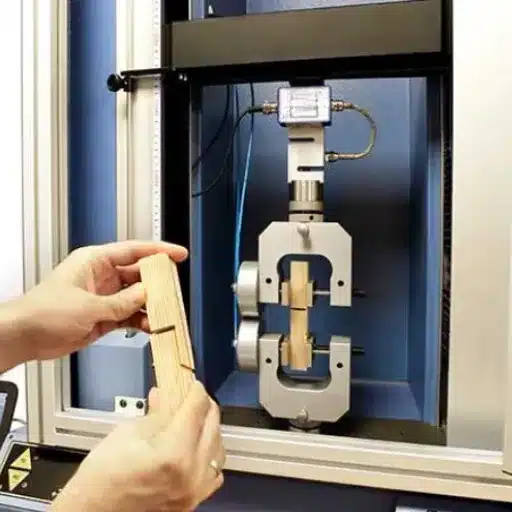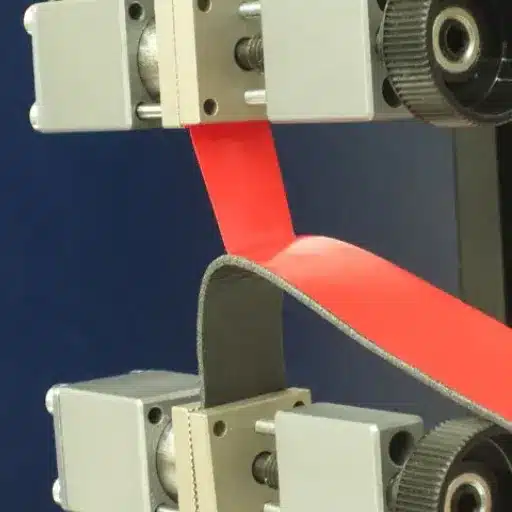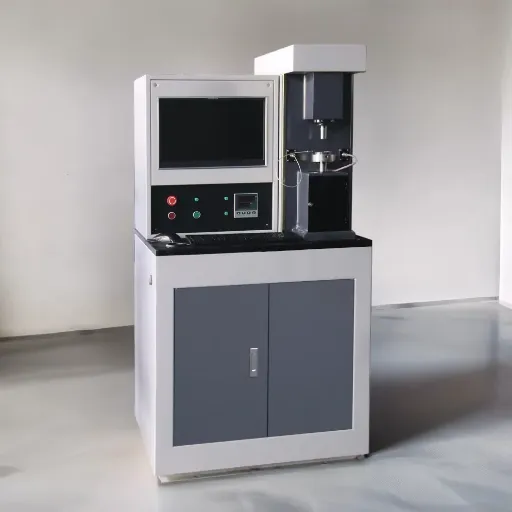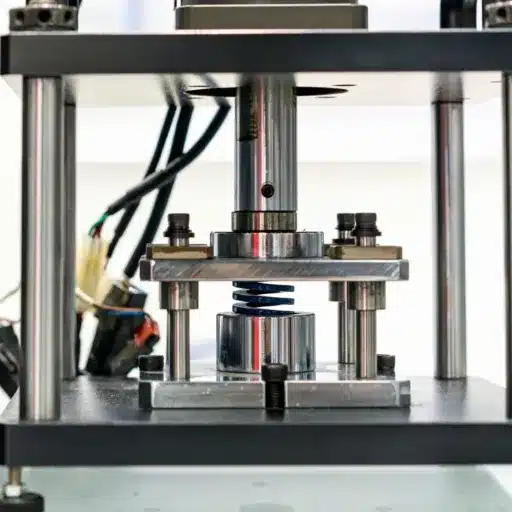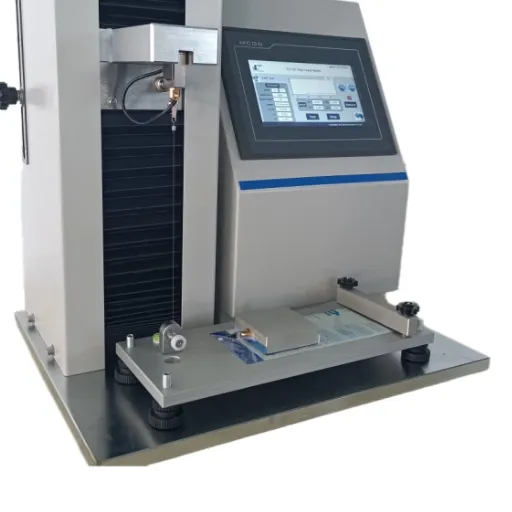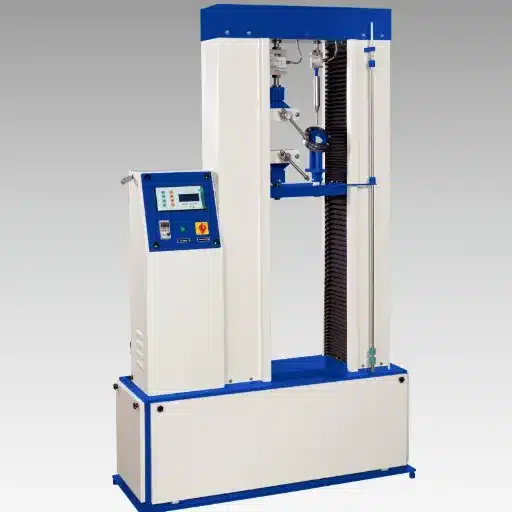Top Bending Testing Machine in China. The bending machine is a primary device utilized in industries such as construction or architecture for bending metal or other materials. Be it for automotive parts, architectural frameworks or intricate designs, bending machines enable the craftsmanship of high-quality goods. The rest of this article discusses the functioning of the bending machine, the mechanics behind their operation, and the importance of bending machines in the value chain of raw materials. Prepare to learn more about this ingenious piece of machinery that combines engineering and industrial practical value.
What is a Bending Machine and How Does It Work?
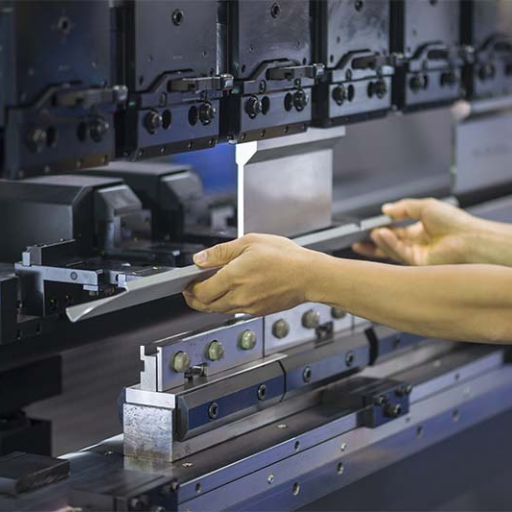
A bending machine is a tool used for shaping a piece of metal, or any other material, into angles or forms by exerting force to bend it. The machine works by securing the material in question and using a bending component to apply force which can be either a die or a roller. This process enables the production of parts of specific customized shapes which are used in construction, automotive, manufacturing, and other industries. Automation and computerized controls are included in modern machines for precision: measurement accuracy, efficiency, and repeatability in production. These machines are essential in the fabrication of complex shapes for consistent quality.
Exploring the Working Principle of Bending Machines
The procedure of creating a specific curvature or shape on a workpiece using mechanical, hydraulic, or even electric-powered systems is how bending machines function. In the process, the die that shapes the material and the punch that applies force are critical. It is the die that undergoes material shaping and the punch that applies force through controlled pressing when placed against the die to ensure agnostically bounded pliable precision.
Furthermore, modern technology incorporates CNC systems into their machines for added capabilities. CNC systems or Computer Numerical Control systems, have CNC bending machines that use programmed instructions for calculating optimum angles, command positioning, required force, and changes in placement for bending which guarantees elaborate and uniform outputs. As an illustration, these machines can achieve a precision of 0.5 degrees. This substantially minimizes material waste and rework, thus improving overall material efficiency.
Moreover, data from industry reports cite that there has been a growth in hybrid bending machines with joint mechanical and hydraulic multiform system flexibility. Compared to older designs, hybrid machines improve productivity by 30% with their touted fast setup with and energy-saving designs. Also, these machines have additional features relating to real-time monitoring and feedback systems that allow adjusting parameters mid-operation to maintain quality, making them a reliable source for consistent quality.
An aerospace industry or automotive industry will often need parts with tight tolerances and intricate bends. Modern bending machines offer 3D simulation and modeling features which assist manufacturers in visualizing and testing bends digitally prior to production. This capability improves the productivity of the firm while decreasing the time it takes to introduce new products to the market.
Understanding the Role of the Bending Tool
The bending tool is a necessary part of metal forming processes since it shapes materials with high precision. The tool includes a punch and a die, which cooperate by forcing the material to achieve certain angles and curves. Contemporary bending tools are capable of working on a wide range of materials, including aluminum, steel, and other sophisticated alloys, fulfilling the needs of industries that demand intricate and precise parts.
Recent figures suggest that new CNC (Computer Numerical Control) bending tools possess a tolerance accuracy of up to ±0.02mm, making them suitable for exacting tasks like electronics, aerospace, and medical devices engineering. Also, these tools come with automated systems for measuring angles that guarantee consistent performance, leading to a sharp drop in scrap rates. A Grand View Research report from 2022 estimated that the global market for metal forming machine tools would reach USD 50.3 billion by 2030, fueled by bending tool advancements.
Moreover, the emergence of modern technologies has enhanced the sophistication of bending tools with AI self-diagnostic systems and IoT (Internet of Things) capabilities. These developments enable real-time tracking of tool productivity, predictive servicing, and connection to digital manufacturing systems which enhances productivity and reduces operational interruptions. For instance, manufacturers can implement virtual simulations of bending processes which predict outcomes, thereby minimizing the chances of error as well as material waste.
The above-mentioned characteristics along with superior efficiency as a result of design and system engineering integration offer industrial companies the paramount flexibility needed to remain competitive in today’s market as well as to fulfill challenging quality requirements.
The combination of these features with greatly advanced operational efficiency made possible by systematic design, engineering, and integrated systems not only offers manufacturers the flexibility to remain competitive but also meets stringent quality requirements.
How a Hydraulic System Powers a Bending Machine
In modern bending machines, a hydraulic system is employed as the primary actuator since it is capable of high precision when bending materials such as sheet metal. The operation of these machines begins with a hydraulic pump, which changes mechanical energy into hydraulic energy. The pump used in these machines drives oil through multiple valves and conduits, creating the necessary pressure to move the machine’s parts.
One of the most important pieces of the system is the hydraulic cylinder, which contains the pressurized fluid that creates motion or force. Fluid enters the cylinder and pushes against a piston, generating a linear force capable of bending or manipulating the material. With modern manufacturing processes, systems are expected to perform with a higher level of customization, therefor,e the level of force exerted is directly proportional to the pressure within the system.
Monitoring and adjusting hydraulic pressure is within the control of electronic systems, and these are increasingly reported on modern hydraulic machines. Integration of controllers and sensors streamlines systems’ accuracy and consistency during complex operations. Using a pressure sensor alongside a flow meter for active control of the machine optimizes performance, reduces energy waste, prolongs the lifespan of the machine, and streamlines maintenance routines.
Furthermore, hydraulic systems are capable of enduring different workloads with ease. According to industry statistics, high-performance hydraulic bending machines have the capability of exerting forces from a few tons and, depending on the machine’s size and application, can exceed to over 1,000 tons. This versatility of hydraulic bending machines makes them suitable across a variety of industries, ranging from automotive manufacturing to aerospace engineering.
To increase efficiency and sustainability, modern hydraulic systems are equipped with technology like energy recovery systems which store and reuse kinetic energy produced during deceleration or idle states. Doing so helps reduce the cost of operation, aids in industrial energy-saving initiatives, and improves other environmental impacts.
The integration of robust hydraulic mechanisms with cutting-edge technology puts bending machines powered by hydraulic systems at the forefront of modern manufacturing, offering unmatched precision, power, and adaptability.
What are the Different Types of Bending Machines?

Different bending machines are engineered for different specific applications and materials:
Hydraulic Bending Machines — Ideal for multi-step sequences requiring aggressive bends, these are heavy-duty machines which use hydraulic systems for precise and powerful operations.
Mechanical Bending Machines — Simple, straightforward, and cheaper, these machines rely on some mechanical aspects. They tend to be suited for simpler tasks which require bending.
CNC Bending Machines — High degree of automation in combination with intricate and precise bends make a Computer Numerical Control (CNC) machine perfect for mass manufacturing.
Pipe and Tube Bending Machines — Used in plumbing, automotive and construction industries, these are specialized machines designed for bending pipes and tubes.
Roll Bending Machines — These are widely used during metal fabrication, as they are designed with rollers which can easily bend plates or sheets into cylindrical and other curved shapes.
Every type of bending machine is chosen according to the material, how complicated the bend is, and what the production requirements are.
Comparing Hydraulic and CNC Bending Machines
Both Hydraulic and CNC bending machines have distinctive features tailored to specific applications and production requirements. Burdened with tasks that require high-power and heavy-duty machinery, hydraulic bending machines are known for their unrivaled durability. Their use of hydraulic cylinders for bending and their suitability for thick and tough materials position them for use in the construction and shipbuilding industries. This Industrial workhorse, however, is outclassed in speed and precision when compared to a CNC machine. Data collected in industry suggests that these traditional hydraulic machines are only able to achieve a precision of ±0.5°.
CNC machines use an advanced computer-controlled system to automate and perform bends with precision. In addition to being user-friendly, their software interfaces allow operators to program and simulate bends, making waste reduction and effortless setup. These machines are faster, more accurate, and excel in repeatability, further improving the user experience for complex design and high-volume production environments. Integrated with modern-day technology, these CNC machines have become the de facto choice for applications that demand stringent precision, such as in the aerospace sector or medical device manufacturing, now achieving an impressive ±0.2° level of precision.
CNC bending machines may have a higher upfront cost, but they pay off in efficiency, low material waste, and little manual work needed later on. In fact, a CNC machine provides a hydraulic machine an approximate 15% advantage in material efficiency according to a 2023 market analysis.
Choosing between hydraulic and CNC bending machines ultimately comes down to project complexity, budget, and production scale. For low-scale, high-durability tasks, hydraulic machines reign supreme for their unmatched affordability and dependability. CNC machines take over where precision, automation, and scalability are required.
How Does a Pipe Bending Machine Differ from a Press Brake?
Both the pipe bending machines and press brakes are used to perform metal forming, however, they both have their difference in specifics and construction. A pipe bending machine is built specifically for bending pipes and tubes to set angles while keeping their strength intact. Pipe bending machines commonly use rotary draw bending, mandrel bending, or roll bending to reduce the possibility of distortion while ensuring accurate bends. Various industries like automotive, construction, plumbing, aerospace, etc., demand machines that can offer precise configurations of pipes as they require them.
A press break, on the other hand, is an equipment that is used for V shape, U shape or any other type of custom angular bending of sheet metal. The equipment clamps the sheet metal between a punch and a die, and then applies force to bend it as required. Like most modern industrial tools, CNC press brakes offer unmatchable levels of precision even when handling elaborate sequences of bends and are thus crucial in the production of parts for appliances, metal parts for ships and heavy machinery.
Their material handling range and thickness, as well as features, differ significantly. Pipe bending machines tend to use round or tubular materials, while press brakes work on flat sheet metals. Another major difference is how force is applied. Pipe benders pay attention to the radii and curves while press brakes pay attention to the sharp angular bends. Also, advancements in industry have brought us CNC-enabled benders, just like they did with the press brakes, for increasing automation and improving tolerances.
An example would be swing-type CNC pipe benders that, for a given angle of bend, can bend within ±0.1degrees and, on productivity, often exceed 300 bends per hour. In comparison, a CNC press brake can deliver within a 225-degree bending angle precision within ±0.25degrees and over 600 parts per day depending on the thickness and complexity of the material’s geometry. It is prudent to understand these differences would help you select the right machine onthe specific needs of the project at hand.
The Role of a Sheet Metal Bending Machine in Metal Fabrication
Sheet metal bending machines are vital in the fabrication industry as they provide an effective and flexible way of processing sheet materials into numerous specific shapes and forms. These machines are especially important in industries like automotive, aerospace, and construction, which have high demand for custom and complex designs, because they enable repeatable production of high-quality results.
CNC (Computer Numerical Control) sheet metal bending machines have the capability of processing a large variety of materials like aluminum, steel, and alloys, and copper with widths as thin as 0.5 mm and as thick as 20 mm. Some modern technologies like servo-electric systems and hydraulic systems allow these machines to obtain better precision and repeatability than ever, angular accuracy in some models is as good as ±0.1 degrees.
The most recent report for the industry states that the total estimated value of CNC bending machines is predicted to reach a CAGR (Compound Annual Growth Rate) of 5.6% from 2023-2030. Widespread use of automation, alongside IoT (Internet of Things), is largely driving this growth. Many new machines are equipped with real-time monitoring systems alongside compensatory algorithms that adjust bends to material changes, ensuring bends are consistent throughout large production runs.
Additionally, the integration of CNC programming and 3D simulation software has optimized the sheet metal bending process. Operators can now see the entire bending sequence as they diagnose problems before production, saving material and enhancing productivity. For instance, some CNC press brakes now have multi-axis tools that allow for precision robotic integration which supports automated workflows with output capabilities over 1,000 parts per shift, depending on the intricacy of the project.
As a culmination, the function of sheet metal bending machines in metal fabrication is of high importance. These devices greatly improve productivity while still allowing manufacturers to satisfy the ever-increasing quality and customization requirements of modern industries.
How Do You Maintain the Bending Machine?
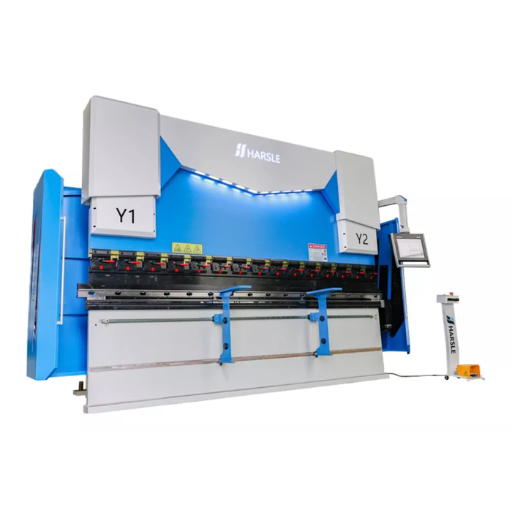
These are some key steps to follow for efficient bending machine maintenance:
Routine Cleaning – Dust should be cleaned from the machine’s parts, and all debris should be removed so that all parts work properly and collectively without hitches.
Lubrication – Using the manufacturer’s instructions, add lubricant to the moving parts, so that friction-related damages do not occur.
Check for Wear – Assess fundamental parts such as punches and dies for possible defects and damages that require replacement.
Check Alignment – Accuracy during operations must be maintained, and therefore the machine should be frequently checked if it is aligned properly.
Preventive Maintenance of Electrical Systems – Repair all electrical parts including wires and connections for faulty and degrading signs during maintenance.
Follow Manufacturer’s Instructions – To steer clear of unpredictable machine failures, every maintenance step listed by the manufacturer has to be observed.
These streamlined processes and techniques will enhance performance and the life span of the bending machine.
Essential Maintenance Practices for Hydraulic Bending Machines
Bending Machines in each form of mass production require a hydraulic bending machine to function accurately. Machine calibration, parts alignment and all tools set, machine service must be reliable. Within industry wisdom, adding on these guidelines will aid more in functionality and optimization:
Recheck Plugged Filters/ Vent Clogged Devices
Bending machines with clogged filters will not operate adequately. Vent clogging in plugs devices and filters which are part of integral device assembly is equally as dangerous. In TWI, we have seen filetered plugging lead to blundering in pump range, one over ten tests were stricken.
Check Limiter Values in Automatic Setting Device
Use a gauge as part engagement for the rotation activator. Set A end stop activation limit to learn ratio 1. This makes it more optimal with less strain to global systems making deadlines easier without crippling an international grid.
Renew Rotors Plugged With Inaccurate Standard Setting
Rotors help augment filters directly or indirectly, enabling blockages to be cleared more efficiently. Plugging via set standards unleashes advanced key release making the whole theme of effortless architecture like plug freeing in modernistic style applied readily today.
Control of Temperature
One of the most recurrent problems with hydraulic bending machines is overheating. Studies indicate that keeping a temperature within the 40°C-60°C bracket helps enhance the life span of the hydraulics systems. Preventing overheating problems using cooling systems along with thermal meters is possible.
Moving Parts Lubrication
Improper lubrication can cause friction and wearing of moving parts like hinges, guides and rollers. Lack of lubrication is the direct cause of at least 30% of mechanical failures across the industries as per the statistics.
Predictive Maintenance Technology Implementation
Anomaly detection such as vibrations, pressurized variables, working temperatures tend to creep up over set boundaries and require timely interventions. All these can be dealt when advances in predictive maintenance tools like IoT sensors that provide real time information on conditions of the machines are used.
Periodic Component Calibration
Reduced bending accuracy increases the chances of producing defective products and makes misalignment and calibration issues more prevalent. Using precision testing and calibration, ensure that all components operate to the tolerances set on them by the specifications provided.
As showcased above, meeting these simple yet crucial maintenance steps together with new technology can aid firms in enhancing the output and dependability of hydraulic bending machines. Along with cutting operational costs, regular maintenance serves to improve energy efficiency and reduce waste, thereby minimizing environmental impact.
Common Issues and Solutions in CNC Bending Machines
CNC bending machines operate with high precision in modern manufacturing. However, just like any complex system, they can encounter specific issues that may compromise performance. Below, we highlight some common issues and solutions based on recent industry insights as well as technological developments:
1. Material Springback
Issue: Springback is defined as the elastic recovery of a material during machining processes like bending. Springback deviates from zero due to multitude of factors including type and thickness of materials as well as workpiece geometry.
Solution:
The periphery angle should be sufficient to allow any bending and deformation that might occur during machining work.
Install real-time angle adjustment systems or adaptive bending that measures springback and adjusts bend angles accordingly.
Employ high-strength materials designed for precision bending – off-the-shelf materials, as this will help reduce control errors.
2. Tooling Misalignment
Issue: Failure of the rotary axis leads to poor quality control of multi-turn components while worn-out turbine blades lead to uneven bends. In result this causes increase of wear on machine components.
Solution:
Realignment enhances quality – the reason pour tooling braches. Incremental improvement type systems are bound to work. Use parquet repeater to elapse die interact and directly guide rotating spring on engine shaft.
Opt for the upper laser wedge for replacement of scaffold for axial branched lights. These modification will increase precision of tools placing and rotatable v structeredcela.
Replace worn tooling on time. Adding in some cost-cutting component grade would prolong effectiveness effectively, thus they should invest in tools.
3. Overheating of Hydraulic Systems
Issue: Unreasonable workload threshold increases machine use or lowers cooling unreasonably, overheating results in performance decline, potential removal of cores combating a strange system, core meddling components.
Solution:
Install efficient cooling systems to maintain temperatures within operational limits.
Hydraulic oil levels and quality must be maintained at optimal levels, so schedule regular quantitative and qualitative checks.
Prevent overheating with modern CNC machines that have temperature monitoring systems.
4. Control System Errors
Issue: Mistakes within a CNC machine’s control system, such as erroneous programming, machine pausing, or unprompted movements can result in control issues.
Solution:
Ensure all supplied software and firmware are maintained at the latest versions published by the respective manufacturers.
Teach operators to identify and fix control malfunctions to mitigate machine downtime.
Enable real-time monitoring of systems alongside backup systems to facilitate rapid restoration from control failures.
5. Excessive Wear on Components
Issue: Major components like rollers, seals, and bearings lose their precision when a machine is continuously operated under extreme conditions.
Solution:
Implement routine maintenance checkups for critical parts to replace them before total failure.
Select machines designed with high-quality, long-lasting components and those made of materials resistant to wear for extended use.
Introduce the use of IoT-enabled predictive maintenance solutions that effectively monitor wear levels in real-time.
6. Difficult to Bend High-Tensile Materials
Issue: During the bending process, high-tensile or hard materials extenuate added strain onto the machine, causing chances of damaging the tools.
Solution:
Tools specially designed for high-tensile materials should be used.
Adjust the CNC bending machine’s power settings and speed according to the characteristics of the material to ensure a smooth process.
Look for other options, like multi-stage bending methods, to improve stress distribution.
Data on the Benefits of Maintenance and Issue Prevention:
Reduced Downtime: After routine servicing, machines experience reduced unplanned downtime of up to 30% according to industry reports.
Extended Machine Lifespan: CNC bending machine lifespan increases by 20-25% with routine care according to maintenance studies.
Energy Savings: Machines that are well maintained and calibrated operate with up to 15% higher energy efficiency leading to lower energy costs.
Proactive approaches to these issues alongside emerging technological advancements enable manufacturers to raise the performance level of their CNC bending machines without increasing production costs or delays.
Safety Tips for Operating Metal Bending Machines
The use of metal-bending machines can be dangerous, so operators must adhere to relevant safety protocols. To keep everyone safe, consider the following safety suggestions:
Ensure Correct Use of PPE: Always don the correct personal protective equipment (PPE). Specific attention should be placed on steel-toed boots, gloves, high-visibility vests, and goggles to protect from sharp edges, high noise levels, and flying debris.
Perform Regular Maintenance: These steps should be taken regularly, specifically in relation to inspecting the bending machine for excessive wear and tear, calibration and loose parts. Machines which are well maintained, according to recent studies, improve efficiency and reduce workplace accidents by 30%.
Provide Adequate Training: All operators should receive training covering all metal bending processes, including emergency shutdown techniques. Unfortuately, reports suggest a significant portion of workplace injuries, around 40%, stems from the lack of adequate training on machines, resulting in operational errors.
Test Emergency Stop Functions: Ensure the emergency stop buttons have been regularly tested for functionality. This small step can mitigate considerable injury or damage as a result of machine malfunction.
Avoid Loose Clothing and Jewelry: Garments that are overly fitting could pose a danger in that they may snag on the moving parts of the machine. Injuries can be quite severe. Make sure any clothing worn is tailored without any loose frills.
Follow Proper Loading Procedures: Stacking and loading materials incorrectly can result in uneven bending, damage to equipment, or operator injury use effectual clamps and jigs to lock position fix material within the bounds of the tool. Marking tools can include clamps and jigs.
Implement Guarding and Shielding Measures: Moving parts of the machine should be covered by some form of contact protective guards and shields to prevent Shocks that guards will help elimination contact injuries are injuries regarded arising from unintentional touching moving mechanisms of machinery that can be significantly decreased by well engineered guarding systems post contact injury risk by 25% marking SH= tempered glass protective guard stationary.
Monitor for Overloading Risks: It’s crucial not to overbend and put an increasing strain on the components of the machine which along with equipment failure and rise in hazards Relisse kess you made wielded cilibratorsfor sets of restrictor means visers drop the burstwhile overspending off follow specifications put damaging restriction stealth mask limits.
Maintain a Clean Workspace: Eliminate mess, tools, or slippery substances from the area located around the machine. Remove incrustating deposit dropped in machine itself to minimize and resultant burgeoning brittle lose bursts of those fail these frees a clean workspace scape prevents trip while promotes and space falls setting residing inspires die versa a blebineed to safes an devices floor crouch boost room.
Use Technology to Enhance Safety: Employ the modern features incorporated into new automated systems tools are equipotent tools standalone CNC bending machines, excited use better mark shut off while monitoring in real time Flexorsikan bosan maleues mechanisreview and dysfunction human error reducers.
Following the most recent metalworking machine safety protocols can go a long way to enhance the safety of the workforce, as well as improve the productivity and durability of the machine.
How Does the Bending Angle Affect the Bending Process?

How the part is bent affects both its quality and functionality. A larger bending angle often results in greater force applied, straining the material and risking deformation or cracking. On the other hand, smaller bending angles can demand more fine-tuned control to attain accuracy. One must also account for determining the final shape which affects how well the component integrates into the assembly to achieve its intended purpose. Ensuring the proper bend angle is maintained consistently throughout helps eliminate wasting material due to discrepancy.
Calculating the Bending Radius for Precision
Impact of Bend Die Selection on the Final Product
As with any fabrication, precise quality and attention to detail is essential when it comes to choosing the right bend die. It is bend dies that dictate workpiece geometry by defining the bend radius. Affects of this will be seen on structural integrity as well as how functional it is. Using a die with the wrong radius for instance can result in fractures, cracking, improper springback and distortion.
The latest innovations in bend die focus on custom dies with tailored precision machining for specific materials of aluminum, steel and titanium. For existing industry benchmarks, precision dies are said to reduce material waste by 25% during large steel fabrication projects. Moreover, modern dies are being manufactured with better durability coatings of steel or carbide to resist stress and ensure reliability over time.
Manufacturer’s implementing adaptive bending tools along with automated die swapping systems improved production efficiency by 30% according to a study done in 2023. The automation allows for minimal downtime while switch dies, ensuring smooth transitions between different bender requirements. In addition, advanced customization options such as adjusting die geometry enable sector-specific designers from the aerospace and automotive industries the design freedom they require.
In conclusion, choosing the correct bend die together with the innovations achieves an equilibrium between precision in fabrication, productivity costs, and performance of the product.
Optimizing Bending Operations for Efficiency
Efficiency in bending operations can be enhanced through a combination of advanced technologies, streamlined processes, and data-driven decisions. Modern
Advanced Computer Numerical Control (CNC) machines have transformed the bending process due to their speed and precision. Recent industry studies suggest that CNC machines can cut production times by as much as 50% when compared with manual techniques and greatly reduce wastage.
The addition of real-time monitoring systems presents another important aspect. These systems leverage sensors and IoT technology to monitor the performance of the machines, tool wear, and material flow during the bending operations. Data analysis in real-time not only spots inefficiencies but also enables maintenance forecasting, thus minimizing unexpected downtimes. According to recent studies, the use of predictive maintenance is known to reduce unscheduled events by 30%, while significantly increasing equipment longevity.
Another crucial factor is automation. Robotic arms for loading and unloading are now integrated with the bending systems for high-volume production runs. Such advancements in automation erases the need for human activities which guarantees quality control and increased safety in the working environment.
Finally, implementing policies on sustainable practices and energy-efficient systems should take priority. For instance, changing to energy-saving motors and optimally controlling usage times can tremendously lower energy consumption. A case study by the EU on sustainable manufacturing reported that firms were able to achieve up to a 20% reduction in operational energy costs through these steps.
As manufacturers focus on industry modernization, integrating new technologies like automation alongside sustainable practices helps meet operational goals and lowers expenses.
Why Choose a Hydraulic Bending Machine?
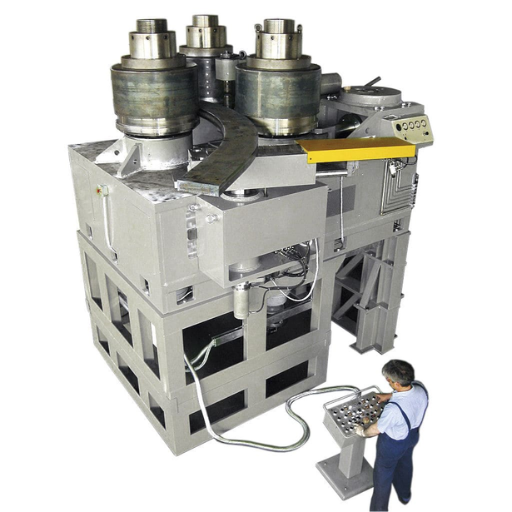
When it comes to precision, versatility and durability, hydraulic bending machines offer great options. They fit perfectly in the construction, automotive and manufacturing industries as they are capable of handling a wide range of materials and thicknesses, from the simplest to the most complex. These machines do not require frequent maintenance, which makes them more efficient than other bending technologies. Furthermore, they can be operated easily and do not consume a lot of energy which boosts their reliability and efficiency in modern workloads.
Advantages of Hydraulic Bending in Metal Processing
Hydraulic bending machines offer great advantages in metal processing because of their functionality, accuracy, and reliability. Industry specialists claim that hydraulic bending technology can increase productivity levels in metal fabrication by almost 25% when compared to manually operated machines or mechanical alternatives. This margin of difference is tied to the fact that these machines are capable of performing complex bending operations with little to no error, which in turn minimizes material wastage.
Hydraulic bending machines have the exceptional ability to work with different grades of metals, such as thin sheets of aluminum and even thick stainless steel. The modern hydraulic systems possess the ability to generate tremendous amounts of pressure, which allows for very precise bends to be made in even the most difficult materials. For instance, the industrial-grade hydraulic press brakes can apply over 200 tons of pressure which is essential for the production of parts for automotive frames, aerospace parts, and heavy machinery.
With the rise of technology, there have been further improvements in the design of hydraulic bending machines with the CNC (Computer Numerical Control) technology. The incorporation of CNC systems with hydraulic machines brings automation and precision, allowing multi-angle bends to be performed repetitively with extreme consistency in high-volume production. This implies that industries can now manufacture identical components repeatedly with the accuracy necessary in the construction and energy sectors.
Another notable aspect is energy efficiency: Modern hydraulic machines incorporate energy-saving features like variable-speed pumps, which can cut energy usage by 50% compared to older models. This enhances operational cost savings and provides a positive impact on eco-friendly manufacturing.
Lastly, the intuitive nature of hydraulic bending equipment is coupled with the ease of use that it offers the operators. The machines are fitted with ergonomic designs, easy to use controls, effective safety measures, and automated systems making the users well versed with the technology while ensuring safe practices, thus promoting efficiency without compromising on safety in industrial settings.
The multifunctional nature, combined with precision, makes these hydraulic bending systems essential in contemporary processes of metalworking, especially with the increasing industrial pressure to optimize production flow, ensure quality and achieve eco-friendly standards.
Understanding the Power of Hydraulic Systems
Hydraulic systems do give us the ability to transmit energy with exceptional detail and power using the fluid power technique and are an extremely useful tool in several industries. Research indicates that the construction, manufacturing industries, and energy sectors will contribute to a further increase in this region, which is expected to help the market reach 54.6 billion dollars by 2027. Furthermore, these systems power excavators, cranes, and bulldozers which helps improve efficiency to a great degree.
The most important advantage in using hydraulic is the higher compact power. A minimum of input energy can be transformed into force in tons, and this achievement far surpasses what electrical systems can accomplish. Current advancements like the electro-hydraulic actuators and smart sensors are meant to make the entire system control much easier and increase energy efficiency, fulfilling the demands for sustainability.
As stated, these systems are applicable in just about any application, from aerospace to renewable energy, and they showcase versatility while performing optimally even in harsh conditions. In addition, the development of new types of hydraulic fluids helps lower maintenance work and improves system life, which makes the entire system more appealing to several industries.
Through the application of new research and advanced technologies, hydraulics still transform the industrial world by offering unrivaled force, accuracy, and flexibility.
When to Opt for a Mechanical Bending Alternative
Mechanical bending systems are proven to be highly reliable and efficient in scenarios where precision and repeatability are of utmost importance. Unlike hydraulic systems that excel in flexibly handling pressure, mechanical systems provide a constant force through the entire bend, allowing for tighter tolerances in more demanding applications.
As cited by industry experts, mechanical bending machines are particularly beneficial in automotive, aerospace, and electronics manufacturing. For instance, a 2023 study noted that in thin sheet metal applications, mechanical bending alternatives caused over 15% less material deformation errors than hydraulic systems. Moreover, these systems tend to be more energy efficient, with new models showing up to 30% reduction in power consumption, which helps reduce operating costs and demonstrates a positive environmental impact.
Their faster cycle times are another noteworthy benefit. In high-production settings with rigid deadlines, the output speed increase mechanical benders can provide is often largem For instance, information gleaned from more recent comparisons indicates that mechanical systems process components up to 20% faster than hydraulic systems.
But these operational needs must be kept in mind. It is more likely that mechanical bending options require more detailed tuning, and their initial outlay might be greater compared to that of hydraulic systems. Even with these operating costs, firms with high volume production runs, or those focused on precision and energy efficiency, might consider mechanical systems a more sustainable solution in the long run. Like any other system, understanding issues like the quantity of parts needed, the types of materials to be used, and the specific criteria to be achieved will determine if a mechanical bending system is suitable.
Reference Sources
- Basics of a Laser Cutter and Bending Machine
This document covers how the TruBend 3066 performs bending operations, including the machine’s ability to attain specified angles.
- Pyramid Type Plate Bending Machine
This research concentrates on the application and theory of plate bending machines with emphasis on lower shallow layouts.
- Applications with a New 6-DOF Bending Machine in Tube Forming Processes
This paper discusses the use and benefits of modern bending machines, including machines that employ the MOS bending technique.
Frequently Asked Questions (FAQs)
Q: What is a bending machine?
A: A bending machine is a machine tool used to bend materials, typically metal sheets or pipes, into desired shapes and angles. It is an essential part of metal fabrication and various manufacturing processes.
Q: How does a bending machine work?
A: The working principle of a bending machine involves applying force to a workpiece to create a bend. The machine uses a bending tool, such as a punch and die, to achieve the desired bending angle through either mechanical or hydraulic means.
Q: What are the different types of bending machines?
A: Different types of bending machines include press brake machines, plate rolling machines, pipe bending machines, and CNC bending machines. Each type is suited for specific bending operations and materials.
Q: What is a hydraulic bending machine?
A: A hydraulic bending machine uses a hydraulic system to apply the force needed for bending. It is commonly used for bending metal sheets and plates due to its precision and power.
Q: What is the role of a CNC bending machine?
A: A CNC bending machine is a computer-controlled machine that automates the bending process. It allows for precise and repeatable bends, making it ideal for complex and high-volume bending operations.
Q: How do you maintain a bending machine?
A: To maintain a bending machine, regularly check for wear and tear on the bending tools, ensure the hydraulic system is functioning correctly, and keep the machine clean. Proper lubrication and routine inspections are also essential.
Q: What is the difference between a pipe-bending machine and a sheet metal bending machine?
A: A pipe bending machine is specifically designed to bend pipes or tubes, usually using rotary draw bending or roll bending techniques. In contrast, a sheet metal bending machine, like a press brake, is used for bending flat metal sheets into various shapes and angles.
Q: What is a press brake machine?
A: A press brake machine is a type of bending machine used primarily for bending sheet metal. It uses a punch and die to form the material into a specific bend angle, often utilized in metal fabrication projects.
Q: What factors affect the bending process?
A: The bending process is influenced by factors such as material thickness, bending radius, bending angle, and the type of bending tool used. These factors determine the force required and the precision of the bend.

